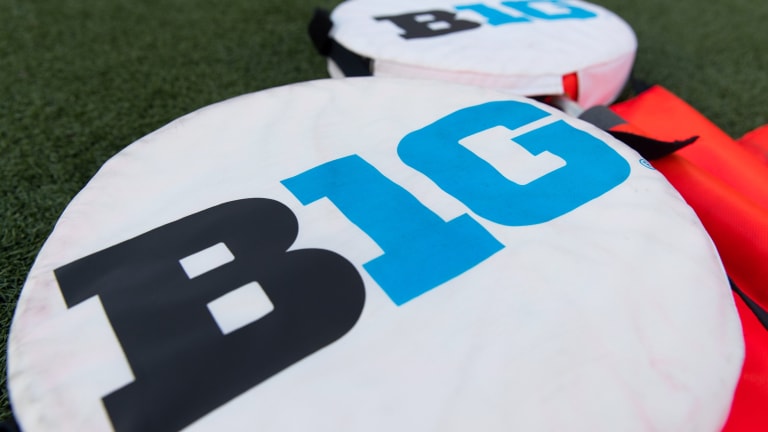
A Jersey Guy: Big Ten Waiting for March-ing Orders

The story of the 2021 college basketball season thus far is the overwhelming presence of the Big Ten.
Check any bracketology projection and you have a consensus of 10 or even 11 Big Ten teams as part of the 68-team NCAA tournament field.
Look at the strength of schedule among conferences and the Big Ten is the overwhelming leader, with a dazzling 67-14 record in non-conference games played through this weekend.
Now that we have reached February in a COVID-19 season laden with potholes, the road to the NCAA tournament and March Madness is more clearly designed.
The Big Ten has an edge there as well, since ALL NCAA tournament games will be played in the Indianapolis area this season, which is in the heart of Big Ten territory.
The only problem—if you wish to use that label—is that the Big Ten is SO balanced that the difference from best to worst in any given game is, at times, almost impossible to discern.
But then again you could use that argument about most of the upper half of the potential tournament field.
After Gonzaga and Baylor, who are both unbeaten and appear to be clearly a cut above everyone else, there is NO super team lurking.
Again, the Big Ten is the leader of the pack among contenders with Michigan, Illinois and Iowa in the Top 7 and Ohio State and Wisconsin in the Top 20 in the NET rankings, which the NCAA selection committee uses as a primary talent evaluating tool.
Go deeper and the Big Ten has 11 of its 14 teams listed in the latest NET rankings, which would match the Big East's record of 11 invited teams from a decade ago.
Because of COVID and other issues, home court advantage is not as strong as it usually is, nor is there any guarantee for the number of available players for any team on any given night.
Because of that, the Big Ten race has shown different trends.
Two of the normal Big Ten bottom feeders, Northwestern and Rutgers, both played the first month of their league schedule as conference leaders.
Both have leveled out.
And while Michigan is the current leader of the Big Ten pack and a strong contender for a No. 1 seed, the entire Wolverine program has hit the COVID-pause button.
The Big Ten is not the leader in surprises, however.
The decline of Kentucky, mired near the bottom of the Southeastern Conference with a 5-10 record and ranked No. 74 in the NET Rankings, as well as the sluggish start of both North Carolina (No. 48, 11-5) and Duke (No. 62, 7-5) in the Atlantic Coast Conference—are head scratching.
Carolina and Duke are showing signs of life, but Kentucky appears to have the last option of winning the SEC tournament title as its only logical path into the NCAA tournament.
There is also an underlying potential problem facing all of the conferences as they move closer towards March, which means both conference and NCAA tournament time.
With COVID-issues still a major stumbling block, how will teams who are worthy of NCAA tournament consideration handle whether or not to risk the possibility of increased Covid exposure from playing in conference tournaments? A risk that could knock them out of the NCAA tournament—which for most conferences starts only a few days later.
Take a dilemma that Villanova and Coach Jay Wright will face next month.
The Wildcats are a projected No. 1 NCAA tournament seed and are a mortal lock for an at-large berth in the field if they should lose in the Big East tournament.
But the Big East tournament will be played in New York, as usual, which is hardly a safe zone despite all of the restrictions put in place. The Big East tournament is scheduled to be played between March 10-13. The NCAA tournament is scheduled to begin on March 18th.
What is the risk-reward factor for Wright and Villanova if they simply end their regular season against Providence on March 6th and then sequester themselves on campus for two weeks until the NCAA tournament?
Admittedly, that is a long layoff, but what happens if someone in the Wildcat traveling party tests positive in New York the following week?
Would there be enough time between the Big East and NCAA tournaments to go through the current protocols?
Other conferences face similar issues.
Take Gonzaga, for example, unbeaten and ranked No. 1.
From an individual team and conference standpoint, what reward as opposed to risk, is there in the Zags competing in the West Coast Conference tournament when they could simply sit out the week and prepare for the NCAA tournament?
Such a move would also open an opportunity for a second WCC team to make the 68-team tournament field, which is hardly a given at this time.
All of those issues loom as we move steadily towards what unquestionably will be an NCAA tournament like no one has ever seen, no matter who wins and no matter when it starts and when it finishes—that appears to be the surest lock of this wild and crazy season.
***
Here's our first guess at the NCAA Top 4 seeding lines.
1. Baylor, Gonzaga, Villanova, Michigan.
2. Alabama, Iowa, Houston, Illinois
3. Ohio State, Wisconsin, Kansas, Oklahoma
4. Missouri, West Virginia, Texas, Creighton